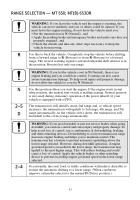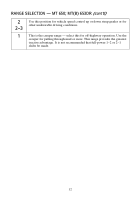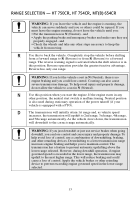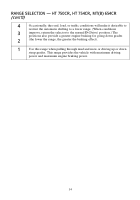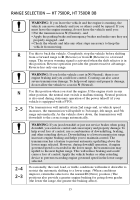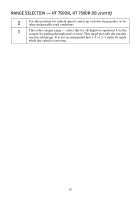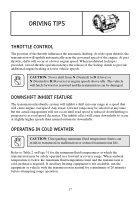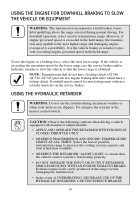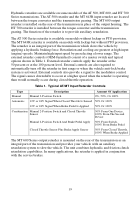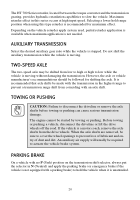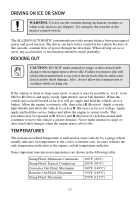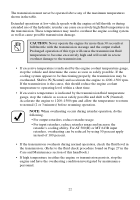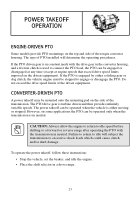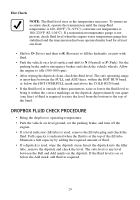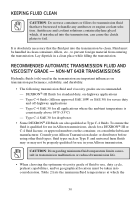ALLISON-OM1334EN - Page 26 of 48
21
DRIVING ON ICE OR SNOW
The ALLISON AUTOMATIC continuously provides proper balance between required
power and good traction. The driver can have better control of his vehicle because of
this smooth, constant flow of power through the drivetrain. When driving on ice or
snow, any acceleration or deceleration should be made gradually.
ROCKING OUT
If the vehicle is stuck in deep sand, snow, or mud, it may be possible to “rock” it out.
Shift to
D
(Drive) and apply steady, light throttle (never full throttle). When the
vehicle has rocked forward as far as it will go, apply and hold the vehicle service
brakes. Allow the engine to return to idle; then select
R
(Reverse). Apply a steady,
light throttle and allow the vehicle to rock in
R
(Reverse) as far as it will go. Again
apply and hold the service brakes and allow the engine to return to idle. This
procedure may be repeated in
D
(Drive) and
R
(Reverse) if each directional shift
continues to move the vehicle a greater distance. Never make neutral-to-range or
directional shift changes when the engine rpm is above idle.
TEMPERATURES
The transmission fluid temperature is indicated in some vehicles by a gauge which
usually indicates oil temperature to the cooler (converter out). In some vehicles the
only temperature indication is the engine coolant temperature indicator.
Some important transmission temperatures are shown in the following table.
WARNING:
Do not use the retarder during inclement weather or
when road surfaces are slippery. De-energize the retarder at the
master control switch.
CAUTION:
DO NOT make neutral-to-range or directional shift
changes when engine rpm is above idle. Failure to return to idle will
subject the transmission to excessive shock loads which could cause
clutch and/or shaft damage. Also, do not allow the transmission to
overheat while rocking out.
Sump Fluid, Minimum Continuous
100°F (40°C)
Sump Fluid, Typical Continuous
200°F (93°C)
Converter Out Fluid, Maximum
300°F (149°C)
Retarder Out Fluid, Maximum
330°F (165°C)
Sump Fluid, Maximum
250°F (121°C)
Back to Top

